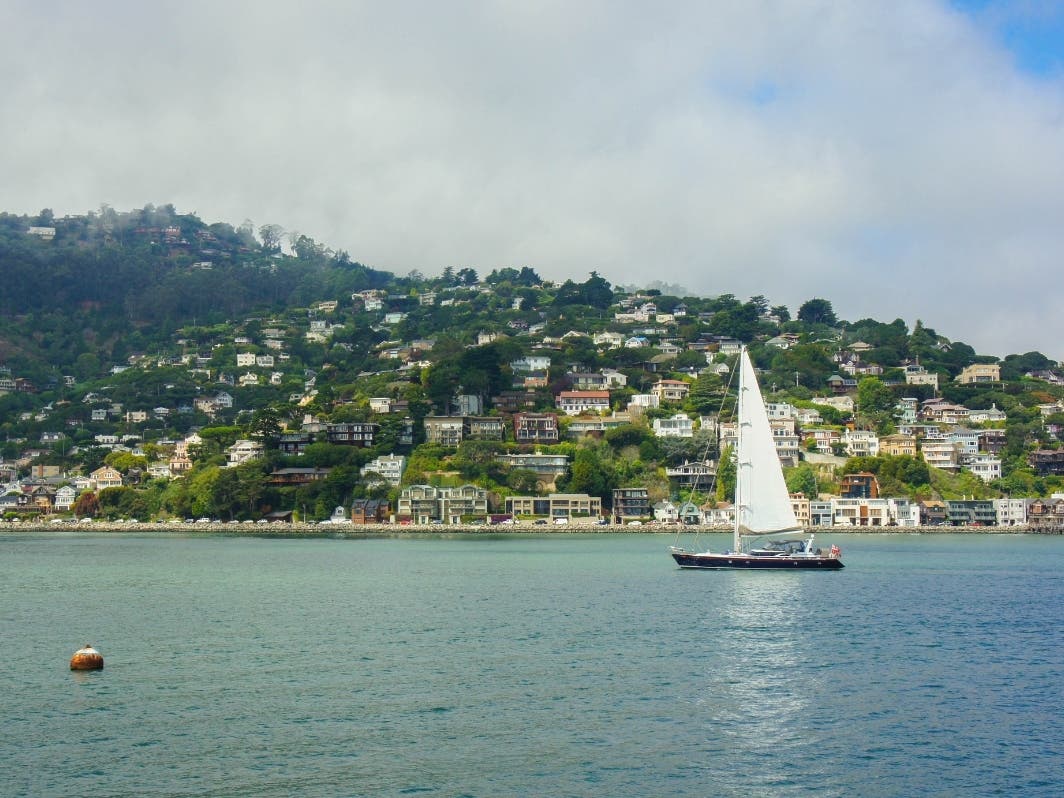Real Estate
Last 'Anchor Out' Floating Home Removed From Richardson Bay
The vessels were removed to protect eelgrass, considered a critical part of the bay's ecosystem.
MARIN COUNTY, CA — The last floating home in Marin County's ecologically fragile Richardson Bay has been removed following a state mandate to protect area eelgrass that is a vital part of the water's ecosystem, a spokesperson for the Richardson Bay Regional Agency said Thursday.
The removal is also a coda to what had been a controversial floating subculture of boaters living on the waters off Sausalito.
The San Francisco Bay Conservation and Development Commission in 2021 entered into an agreement with the Richardson Bay Regional Agency ordering that all vessels and floating homes be removed from the Bay by October 2026.
Find out what's happening in Mill Valleywith free, real-time updates from Patch.
The agreement was driven in large part by the need to protect the eelgrass ecosystem there, according to the RBRA.
But the decision to remove the array of floating homes manned by people termed "anchor outs," who have lived rent-free on the water in a subculture that romantics might call aquatic-bohemian but others describe as an eyesore, resulted in at least one lawsuit and accusations that the county and RBRA were throwing people off the Bay and onto the street.
Find out what's happening in Mill Valleywith free, real-time updates from Patch.

Last year, the county housing authority approved vouchers for people living on boats in the Bay to relocate to residences on land. Many of the people living on boats would otherwise be homeless and had moored there illegally.
In February 2023, the county estimated that there were still at least 60 people living in boats there.
One such anchor out was Daniel Knight, who won a preliminary injunction against the RBRA last year when it tried to remove his vessel first through offering a voucher — he said the amount would be far less than the boat's worth — and then tried to remove his boat by calling it "marine debris."
According to Knight's attorneys, he eventually settled the case for an undisclosed amount.
The environmental impact the boats and vessels had on the eelgrass in the area was indeed significant, however.

"Eelgrass is a critical component of a healthy and vibrant Richardson Bay," said a statement released Thursday by the RBRA. "It supports herring runs, reduces erosion, sequesters carbon and is a crucial ecological resource for harbor porpoises and sea lions."
Thousands of migratory birds also rely on the eelgrass for feeding and resting along the Pacific Flyway.
RBRA officials said that when anchors, chains and other ground tackle from vessels scrape the bottom of the Bay, they act as a "lawn mower" for any living plants and create areas where eelgrass cannot grow. An area "four times the size of Alcatraz" now exists where the grass has been destroyed, the agency said.
In addition to the housing vouchers, 16 vessels were removed with the help of a buyback program funded by the RBRA.
As part of the agreement with the state, a small number of vessels will be allowed to remain anchored if they are deemed "seaworthy," at least through October 2026. After that, all boats and vessels will be allowed only 72-hour anchorage, according to BCDC.
Copyright © 2024 Bay City News, Inc. All rights reserved. Republication, rebroadcast or redistribution without the express written consent of Bay City News, Inc. is prohibited. Bay City News is a 24/7 news service covering the greater Bay Area.
